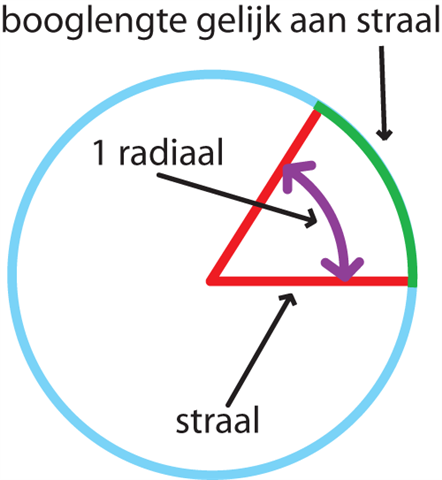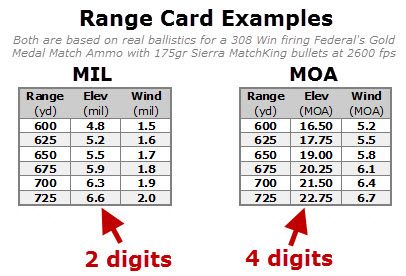- Sale
- 360 Degree Photography
- Battery and Battery Grip
- Backgrounds Even Color
- Backgrounds with Print
- Background Systems
- Cameras
- Camera Accessories
- Camouflage
- Continuous and Videolight
- Filters, Converters and Rings
- Photo frames
- Clamps and Adapters
- Cases and Bags
- Bulbs
- LED Lighting
- Magnifying Glasses
- Macro Photography
- Microphones
- Microscopes
- Night Vision Devices
- Shooting Tables and Tents
- Outdoor and Survival
- ID Photo Systems
- Flash Umbrellas
- Printers
- Reflectors
- Reflectors and Snoots
- Riflescopes
- Rigs Sliders and Stabilizers
- Camouflage Hides
- Smartphone Accessories
- Soft Boxes and Beauty Dishes
- Speedlite Camera flashes
- Spotting scopes
- Tripods and Ballheads
- Strobist
- Studio Accessories
- Studio Flashes and Kits
- Tecco Ilford Print Media
- Telescopes
- Trigger Sets
- Binoculars
- Thermal Imaging
The difference between MRAD and MOA.
If you are going to buy a rifle scope, you can choose from several types and options. In some cases you will have the choice of an adjustment in MRAD or an adjustment in MOA. Through one of these settings, and your reticle determine in a few clicks how much correction is applied to the height and width to get a good shot at the target. If you want to know how to adjust a rifle scope, please refer to our guide "Scope Adjustment". It is possible to work with both a MRAD as a MOA adjustment, however, both types of adjustments require a different way of calculating. Below are two types of calculating and examples of how you calculate with those types.
 MRAD
MRAD
MRAD stands for mill radians (or MIL for short), based on a radial line (the unit of an angle). A radial is defined as the size of a centre angle of a circle, which the length of the circle is equal to the length of the radius. This type of angle measurement is used to calculate the distance to the target and the correction for the bullet. When calculating in MRAD, you are speaking of MIL, this is 100 yards (91,4m) equal to 1 MIL.
| Calculating in MRAD | |
| 100 yards (91,4 m) | 1/10 MIL= 0.36" = 0.91 cm |
| 100 yards (91,4 m) | 1 MIL= 3.6" = 9.14 cm |
| 200 yards (182,8 m) | 1/10 MIL= 0.72" = 1.82 cm |
| 200 yards (182,8 m) | 1 MIL= 7.2" = 18.28 cm |
| 300 yards (274,3 m) | 1/10 MIL= 1.08" = 2.74 cm |
| 300 yards (274,3 m) | 1 MIL= 10.8" = 27.43 cm |
MOA
MOA stands for minutes-of-angle, what is based on degrees and minutes. Because there is 360 degrees in a circle, and for 60 minutes in a degree for a total of 21,600 degrees. This type of angle measurement is used to calculate the distance to a target and to calculate the correction for the bullet impact. Often calculations are made with 1 MOA at 100 yards (91.4 meters), but you need to count on 100 yards with 1.05 MOA. Up to 100 yards there will be no problem with 1 to 100 comparison, but when shooting over longer distances you will be 5 % off and this will result in a miss.
| Calculating in MOA | |
| 100 yards (91,4 m) | 1/4 MOA = 0.26" = 0,66 cm |
| 100 yards (91,4 m) | 1 MOA = 1.05" = 2,67 cm |
| 200 yards (182,8 m) | 1/4 MOA = 2.1" = 1,33 cm |
| 200 yards (182,8 m) | 1 MOA = 2.1" = 5,33 cm |
| 300 yards (274,3 m) | 1/4 MOA = 0.79" = 2,00 cm |
| 300 yards (274,3 m) | 1 MOA = 3.15" = 8,00 cm |
Differences
Basically, both types are equally successful and it does not really matter which one you choose. It's all about how well you know the system your (going to be) shooting with. It all comes down on how you are willing to calculate your shots or how your fellow hunters and/or shooters do it. Actually, it is easier if you can talk about the same calculations instead of having to convert the numbers every time. A known fact is: When you are familiar with MOA, it is not advisable to switch to MRAD.
There are a few differences between the MRAD and MOA, but at the end of the line they do not have great advantage over the other. In that matter you cannot make a mistake in your choice between MOA and MRAD.
- A 1/4 MOA adjustment is a little easier to adjust.
- MRAD is somewhat easier to communicate with others.
- If you think in yards / inches then it is easier to deal with MOA. If you measure in meters / centimetres then you better choose MRAD.
- If you have friends who have already chosen a particular type, it is convenient to select the same system.
- 90% of the professionals are using MRAD, because there are more options in the MRAD system
- Whatever you do, choose the same turrets/reticle.
The most common setting is 1/4 MOA or 1/10 MIL. Technically, the 1/4 MOA clicks slightly more accurate than the 1/10 MIL. The MIL values are somewhat easier to communicate. In addition, the use of cards with MIL are easier to read because they are indicated by 2 numbers only, while the cards with MOA are indicated with four numbers .

Choosing?
If you normally think in meters or centimetres, then it is easier to calculate distance with a MIL (MRAD) system. If you normally think in yards or inches, than MOA is the more convenient calculating partner. If you are not going to calculate distances, both types are equally effective.
To find out what is useful, ask yourself these important questions:
- How do I communicate my clicks with fellow hunters/ shooters?
- Which system are my friends using?
- Which system am I familiar with and do I want to calculate?
Furthermore, you can also take the following questions in consideration:
- If I have to say how far away something is, do I talk in meters or yards?
- If you must indicate how wide a target is, do you talk in centimetres or inches.
- Is my distance meter set to meters or yards?
- Is your map in yards or meters.
Usually you think in yards and inches if you are American, but that does not mean you cannot go for a MIL setting. For example, the military also frequently use the MIL system because they talk in the metric system.